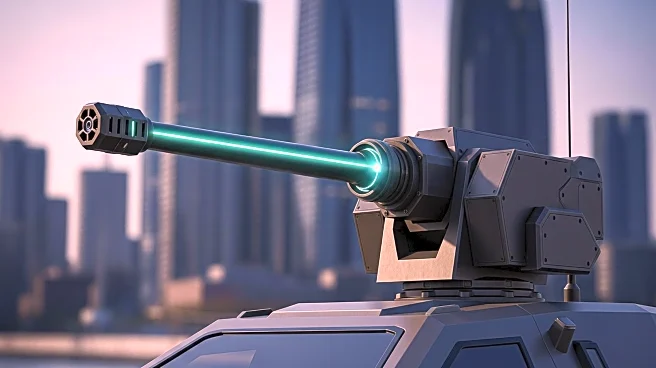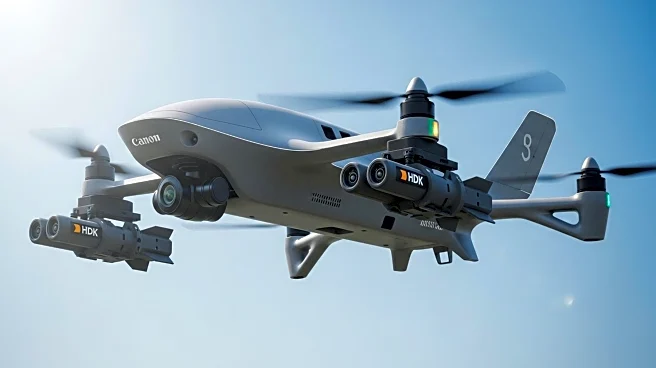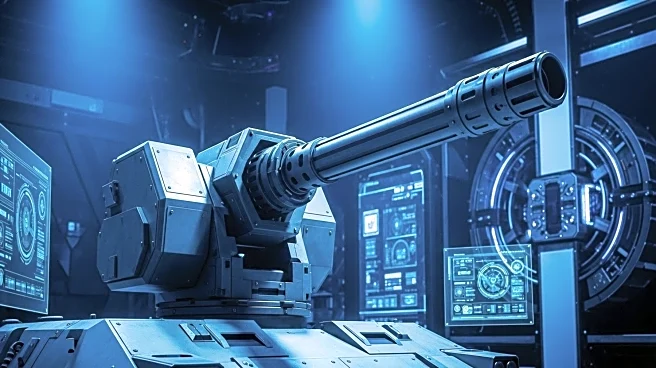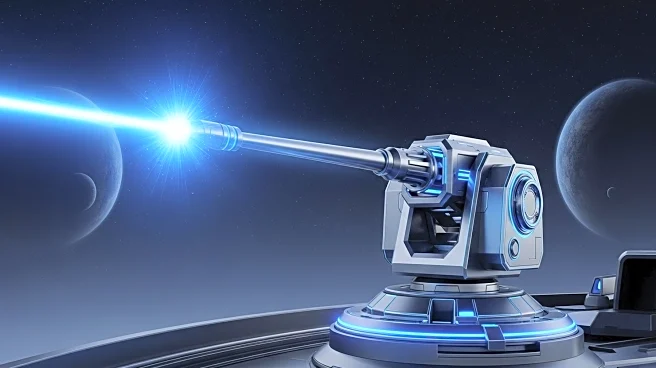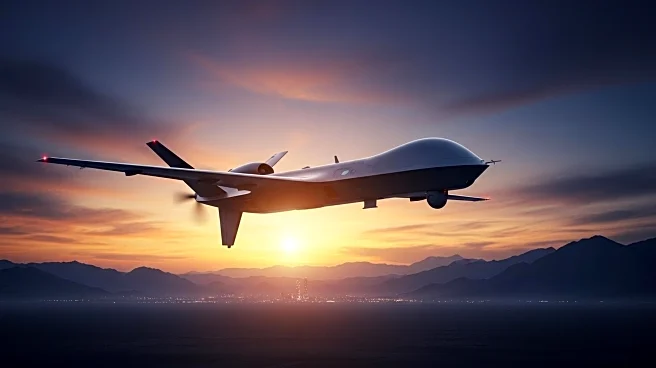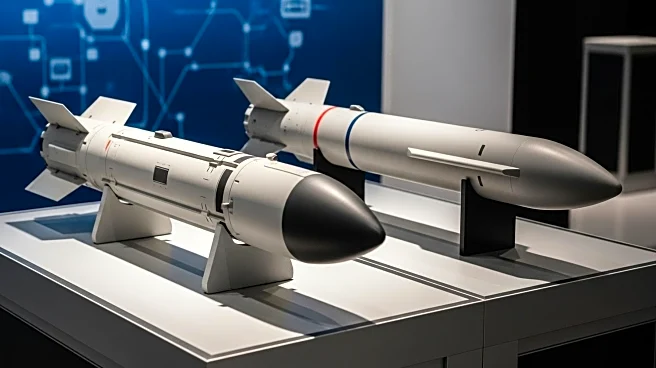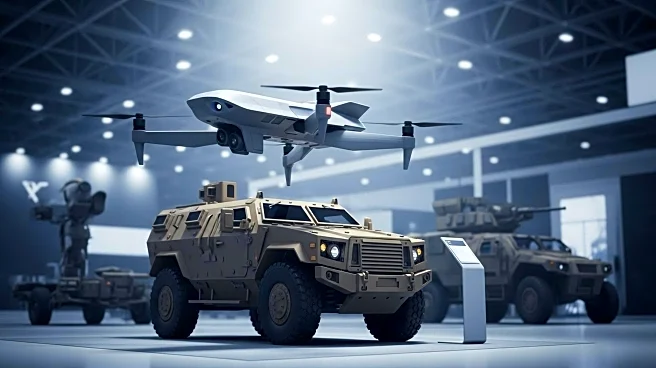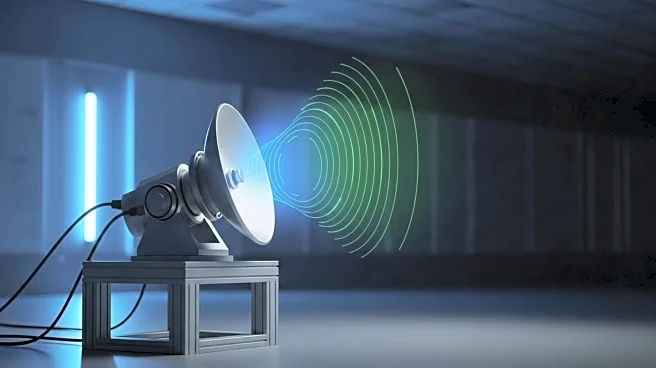What is the story about?
What's Happening?
Electro Optic Systems (EOS), an Australian defense technology company, has introduced its 'Apollo' 100 kW-class high-energy laser weapon (HELW) at the Defence and Security Equipment International (DSEI) 2025 exhibition in London. The Apollo system is designed to target and neutralize unmanned aircraft systems (UASs) of groups 1, 2, and 3. It boasts a laser power range of 50-150 kW, with capabilities to destroy UASs at distances from 50 meters to 3 kilometers. The system can also deny optical sensors at ranges up to 15 kilometers and is capable of destroying over 20 group 1 UASs per minute. EOS has secured a contract worth EUR71.4 million (USD84 million) from an undisclosed European NATO member for the delivery of the Apollo system, including spare parts and training, with fulfillment expected between 2025 and 2028.
Why It's Important?
The introduction of the Apollo laser weapon system represents a significant advancement in defense technology, particularly in countering the growing threat of unmanned aircraft systems. As UASs become more prevalent in military operations, the ability to effectively neutralize these threats is crucial for maintaining airspace security. The contract with a NATO member underscores the strategic importance of such technologies in enhancing the defense capabilities of allied nations. This development could lead to increased demand for high-energy laser systems, potentially influencing defense procurement strategies and fostering further innovation in directed energy weapons.
What's Next?
The successful deployment and integration of the Apollo system by the NATO member could pave the way for additional orders from other NATO countries seeking to bolster their defense against UAS threats. EOS may also explore further enhancements to the Apollo system, potentially increasing its range and effectiveness. The broader defense industry will likely monitor the system's performance closely, as its success could drive further investment in laser weapon technologies. Additionally, the adoption of such systems may prompt discussions on international regulations and agreements regarding the use of directed energy weapons.
AI Generated Content
Do you find this article useful?
